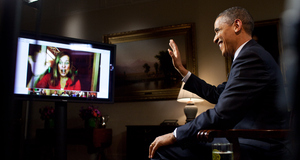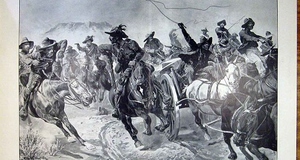Featured Article:Government Public Relations: Public Diplomacy or Propaganda?
By
2015, Vol. 7 No. 03 | pg. 3/3 | « The Good and Bad of Government Public RelationsGovernment PR efforts cost great deals of money to develop, implement and analyze. If the PR effort does not go as planned, valuable taxpayer money and other resources could be wasted. Government PR has likewise been criticized for disturbing the internal policy-making processes because the main decision-making body is not the first to be informed of a policy issue being considered. Rather, everyone is being informed, which can lead the public to confuse policy intentions with policy decisions (Gelders & Ihlen, 2010, p. 61). This is an important distinction, because the decision-making body are trained to handle the policy issues that come to their desks. The pressured deliberative process extends not only to politicians and their publics, but also between politicians and civil servants. Civil servants, in compliance with their political bosses, may be forced to express a partisan position when the government PR message is released. This, as such, could be a misuse of public money (Gelders & Ihlen, 2010, p. 61). Government and public relations are similar, which makes it more likely for a seamless integration of public relations into a government body. The similarities can be grouped together under three reasons. First, each is bound by rules of self-regulation (White, L'Etang & Moss, 2009, pp. 397-398). Political laws to foster ethics and understanding exist at the local, state, national and international levels. Public relations codes, such as the constitutions of the Public Relations Society of America (PRSA) and the International Public Relations Association (IPRA), exist to promote social transparency among both PR practitioners and their clients. Second, each can represent their own issues (White, L'Etang & Moss, 2009, pp. 397-398). Politicians and government organizations will advocate or condemn policy to advance their organizational goals. Public relations makes the goals of a client clear, as it can identify and clarify arguments to promote public discussion. Third, each must declare their interests and avoid any conflicts (White, L'Etang & Moss, 2009, p. 398). Federal judiciary bodies in the U.S., for example, often have laws that mandate that judges recuse themselves from hearing cases that conflict with their personal interests. Public relations is similar because a practitioner cannot hope to present and clarify objective arguments for their client if there is a conflict of interest.Government public relations can also be considered a part of the democratic process (Gelders & Ihlen, 2010, p. 61). In the current era of digital media, it is very flexible and cost-efficient for a government to express their strategic, organizational views to a wide variety of constituents. Policy-making is thus more interactive for practitioners, it helps citizens to feel that they are more involved in the policy-making process as it proceeds. Government PR practitioners can also evaluate the effectiveness of their policies based upon highly-convenient feedback surveys that can be completed on constituents' own time. This analytic process also helps government PR practitioners to devise messages that capitalize on the diversity of opinions inherent in a policy issue. When messages reflect the diversity of opinions, this can subsequently increase national unity (Mearsheimer, 2001, pp. 60-61; White, L'Etang & Moss, 2009, p. 396). In a public that is heavily influenced by media of all different types, public relations works to identify, revise and clarify governmental arguments in the face of media scrutiny (Gelders & Ihlen, 2010, p. 61; Signitzer & Wamser, 2005, p. 457). In general, since public relations uses many of the same tactics as journalism (time-sensitive written pieces, broadcast media and a digital presence, and others), public relations is effective at spurring public debate on stories written by journalists. With a transparent media environment, this subsequently enhances the democratic exchange of ideas, as well as accountability (Gelders & Ihlen, 2010, p. 61). When national unity is increased, the global stage is opened to show other countries a model government PR effort. This subsequently can increase public and cultural diplomacy in the form of soft power (Mead, 2004, p. 48; Mearsheimer, 2001, pp. 60-61; Nye, 2004, pp. 256-257; White, L'Etang & Moss, 2009, p. 396). ConclusionTo serve the needs of constituents, the government will always have an agenda. While there will always be partisan debates on the amount of government intervention needed to accomplish policy goals, it is important for the government to remain at the service of its constituents. Public relations is just one of many strategies that the government can utilize to increase policy dialogue with citizens whose needs must be met. Of course, the government must maintain and promote an ethical practice of public relations to avoid devolving into propaganda. To encourage ethical practice, the government can look to the constitutions promulgated by organizations such as the PRSA and IPRA. ReferencesArt, R. A. (2009). The fungibility of force. In R. Art & K. Waltz (Eds.),The Use of Force: Military Power and International Politics(7th ed., pp. 3-21). Boulder, CO: Rowman & Littlefield. Foucault, M. (2001). The subject and power. In J. Faubion & R. Hurley (Eds.),Power: The Essential Works of Foucault, 1954-1984(1st ed., Vol. 3rd, pp. 326-348). New York: New Press. Gelders, D., & Ihlen, Ø. (2010). Government communication about potential policies: Public relations, propaganda or both? Public Relations Review, 36 (1), 59-62. George, A. (2009). Coercive diplomacy. In R. Art & K. Waltz (Eds.),The Use of Force: Military Power and International Politics(7th ed., pp. 72-78). Boulder, CO: Rowman & Littlefield. Gregory, B. (2005, August). Public diplomacy and strategic communication: Culture, firewalls, and imported norms. In symposium Conference on International Communication and Conflict . Symposium conducted at the American Political Science Association, The George Washington University and Georgetown University, Washington, D.C. Kovacs, R. (2001). Relationship building as integral to British activism: its impact on accountability in broadcasting. Public Relations Review, 27 (4), 421-436. Kovacs, R. (2006). Interdisciplinary bar for the public interest: What CSR and NGO frameworks contribute to the public relations of British and European activists. Public Relations Review, 32 (4), 429-431. L’Etang, J. (1996). Public relations as diplomacy. In J. L’Etang & M. Pieczka (Eds.), Critical perspectives in public relations (pp. 14–34). London: International Thomson Business Press. L’Etang, J. (2002).Public relations education in Britain: A review at the outset of the millennium and thoughts for a different research agenda.Journal of communication management,7(1),43-53. L'Etang, J. (2009)Public Relations and Diplomacy in a Globalized World: An Issue of Public Communication.The American Behavioral Scientist, 53(4),607-626. Malone, G. D. (1988). Political advocacy and cultural communication: Organizing the nation's public diplomacy. Lanham, MD: University Press of America. Mead, W.R. (2004). America's sticky power. Foreign Policy, 141, 46-53. Mearsheimer, J. (2001). The tragedy of great power politics. New York: W.W. Norton & Company. Nye, J. (2004). Soft power and American foreign policy. Political Science Quarterly, 2, 255- 270. Richards, B. (2004). Terrorism and public relations. Public Relations Review, 30 (2), 169-176. Rugh, W. A. (2006).American encounters with Arabs: The soft power of U.S. public diplomacy in the Middle East. Westport, CT: Praeger Security International. Said, E. (1978). Orientalism: Western Representations of the Orient. London: Routledge and Kegan Paul. Signitzer, B. & Wamser, C. (2005). Public diplomacy: A specific governmental public relations function. Public Relations Theory II, 4 (33), 435-464. Tuch, H. N. (1990). Communicating with the world: U.S. public diplomacy overseas. New York: St. Martin’s. United States 107th Congress. (2002).An act to enhance united states public diplomacy, to reorganize united states international broadcasting, and for other purposes(H.R. 3969). Retrieved from U.S. Government Printing Office website: http://www.gpo.gov/fdsys/pkg/BILLS-107hr3969eh/html/BILLS-107hr3969eh.htm United States Department of Defense. United States Department of Defense, Office of the Undersecretary of Defense for Acquisition, Technology and Logistics. (2007). Report of the defense science board task force on strategic communication. West Bethesda, MD: Crossbow Press. Wadsworth, (2006). Winning the war of ideas: Assessing the effectiveness of public diplomacy. Retrieved from http://oai.dtic.mil/oai/oai?verb=getRecord&metadataPrefix=html&identifier=ADA448271 White, J., L'Etang, J., & Moss, D. (2009). The united kingdom: Advances in practice in a restless kingdom. In K. Sriramesh & D. VerÄiÄ (Eds.),The global public relations handbook: Theory, research, and practice(pp. 381-406). New York: Routledge. Suggested Reading from Inquiries Journal
Inquiries Journal provides undergraduate and graduate students around the world a platform for the wide dissemination of academic work over a range of core disciplines. Representing the work of students from hundreds of institutions around the globe, Inquiries Journal's large database of academic articles is completely free. Learn more | Blog | Submit Latest in Business & Communications |


















